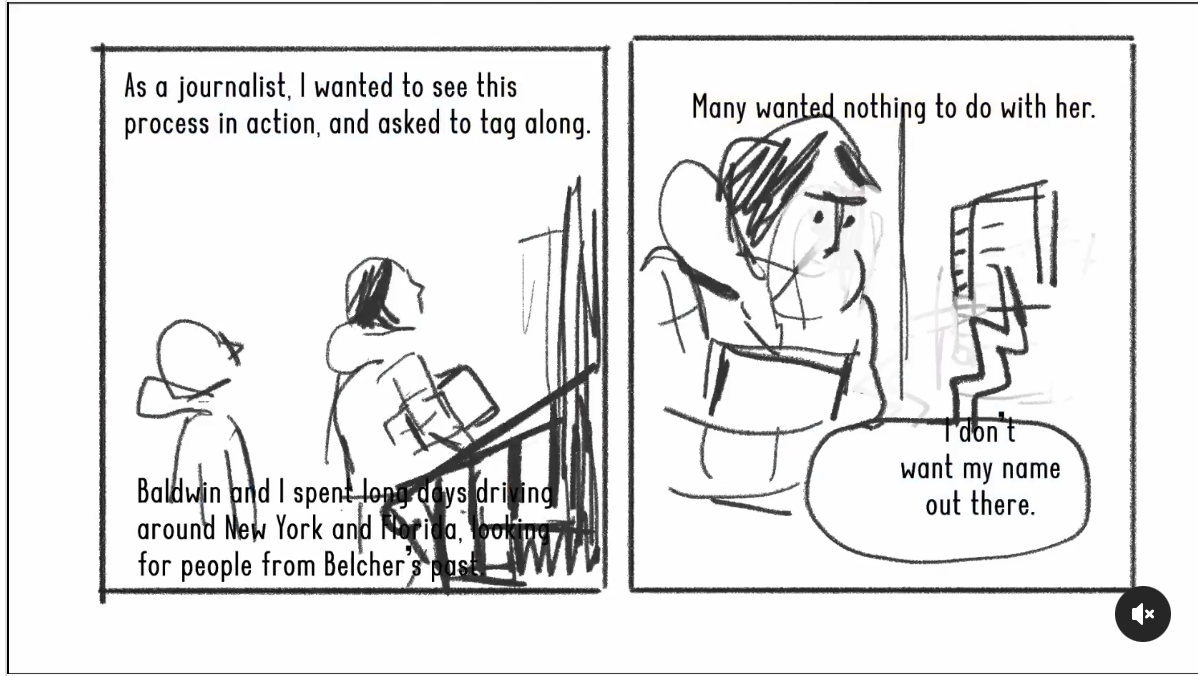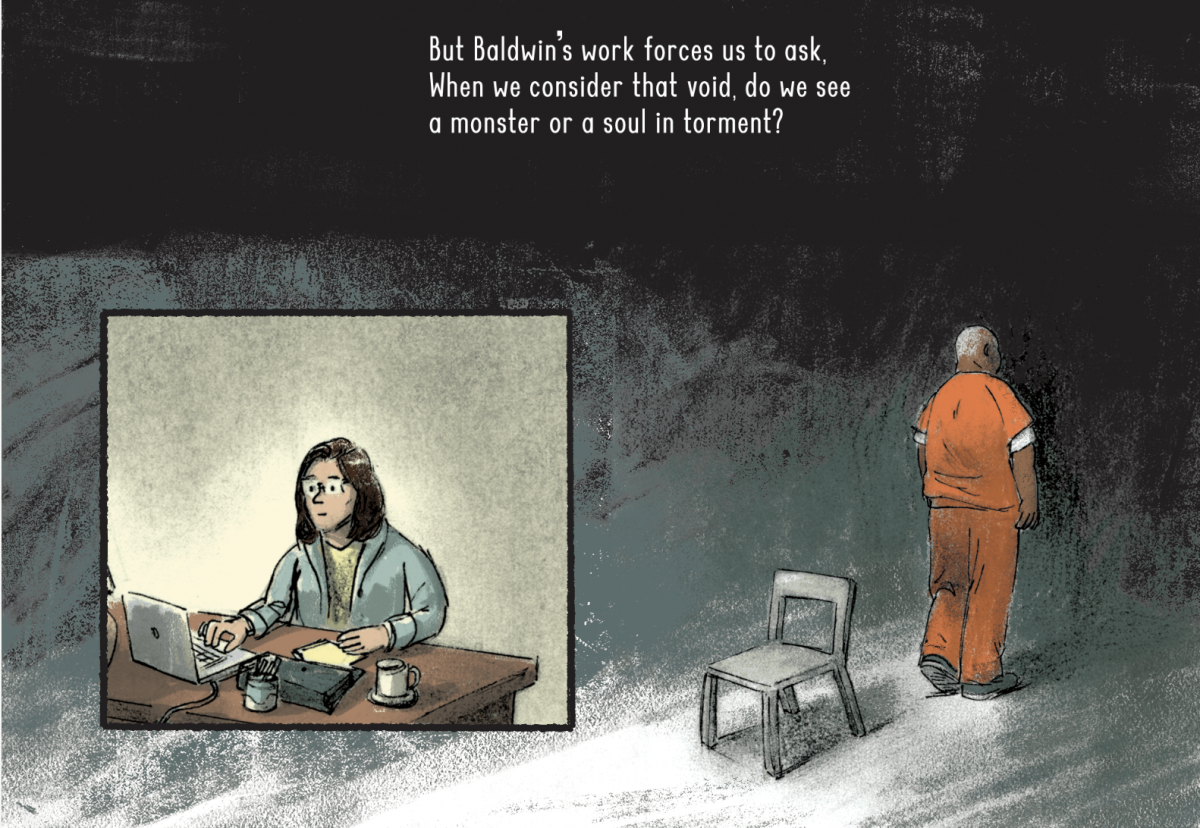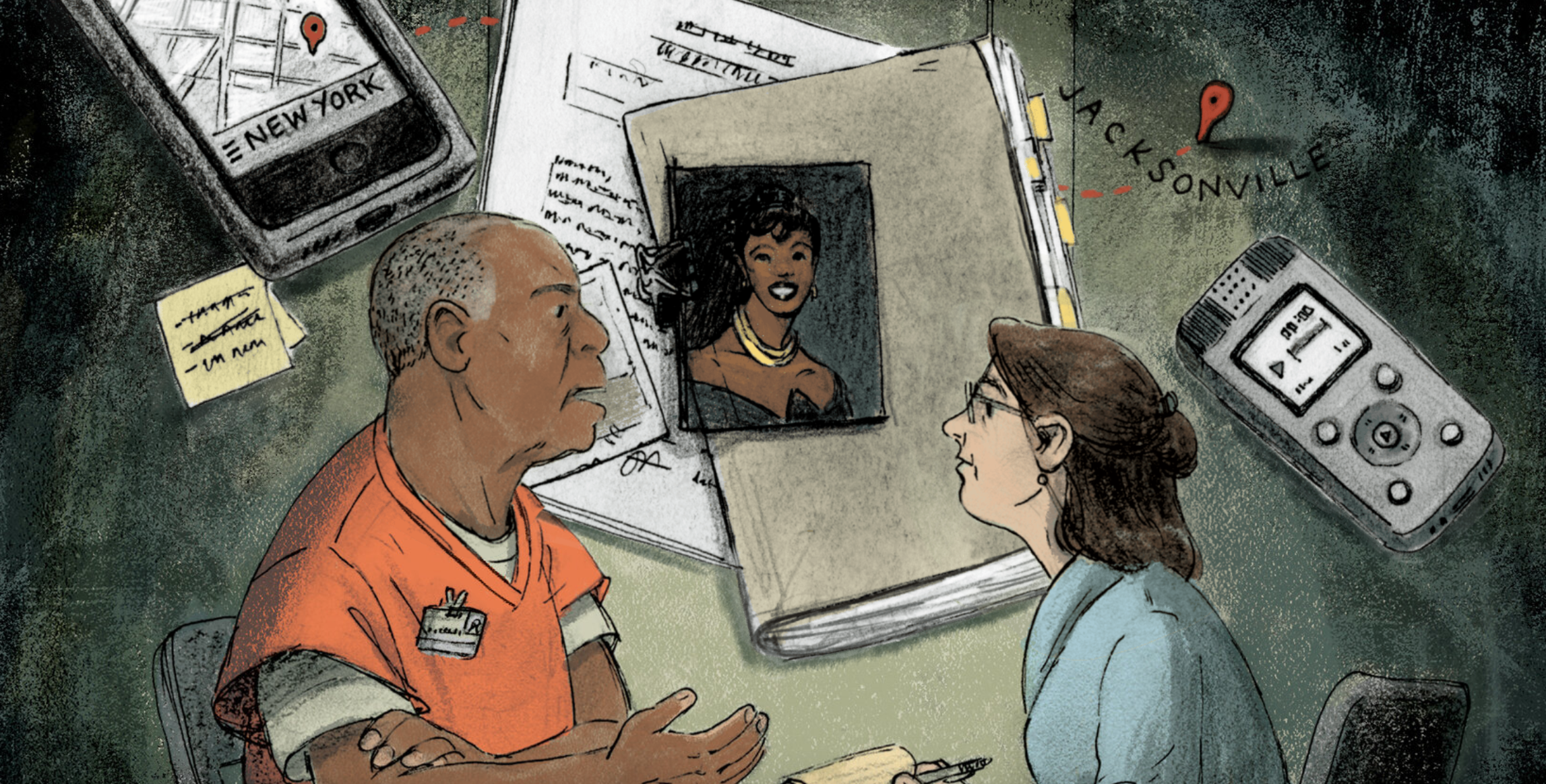The Marshall Project’s Innovative Look At Death Penalty Mitigation Specialists
In 2014, Maurice Chammah, a journalist from The Marshall Project, met with death penalty mitigation specialist Sarah Baldwin while reporting on executions. Mitigation specialists gather and present information about clients’ life experiences, in hopes of swaying a jury toward a more merciful outcome.
Intrigued by Baldwin’s work, Chammah asked if he could shadow her during one of her cases. Baldwin agreed to bring Chammah with her as she worked the case of James Belcher, who had been sentenced to the death penalty for his murder of Jenifer Embry.
Chammah followed the case through Belcher’s sentencing hearing, where Belcher was released from death row. Chammah documented the story in a long-form narrative piece for The Marshall Project in March 2023.
After the piece was published, Chammah worked with Jackie Roche, an freelance cartoonist and illustrator who specializes in non-fiction comics about history and current events, to create a graphic novel-style journalistic piece that came out in December 2023.
Storybench spoke with Chammah and Roche about the collaborative process that led to the finished pieces.
The following interview has been edited for length and clarity.
What prompted the choice to add an illustrated component to the piece after the long-form narrative had already been published?
Chammah: The original idea came from an editor at The Marshall Project; specifically because there had been an effort internally to push into more forms of visual journalism, and even more specifically because we are increasingly serving an incarcerated audience. There’s a magazine called “News Inside” that The Marshall Project publishes for incarcerated readers in prisons and jails across the country. We know from past research that there are very significant literacy challenges, and the rates of literacy can be quite low in these environments. But we thought that this story could be appealing and helpful and evocative for many incarcerated people who have traumatic backstories in their own lives and want to understand more about the connection between trauma and crime. So, that comic was viewed as a way of reaching out to that audience.
How did asking for permission to illustrate the story differ from asking for permission to take photos, the more common journalistic practice?
Chammah: It was hard to explain, frankly. I recall writing up a letter to Bernard Belcher [James Belcher’s father] himself asking for permission and trying to explain what this project was. I remember calling his mother to talk about it. And they were very forthcoming and interested in it.
But that said, there were still certainly moments where I sent some of Jackie’s initial sketches to Sarah Baldwin, just to make sure that we were proceeding in a way that wasn’t going to get a really negative reaction.
As a reporter, you obviously cannot ethically share your reporting with somebody before it’s published. This is a sort of unique scenario where the story has already been published, and you’re adapting it into a new format. And you do want to be sensitive to people’s sensitivities. If anything was being represented visually that was really going to bring an adverse reaction from someone, I wanted to at least understand that at the outset before publication day. Fortunately, that didn’t happen.

Roche: If you’re a photographer for a story, you have to be present. You know, what’s happening. You have some sort of relationship with the photographer, but she’s not here, she doesn’t see what I’m doing in my studio. So I was glad that Maurice could share that preliminary work with her.
How did you choose between using black and white or color to represent certain scenes, particularly when documenting scenes you could not have witnessed firsthand?
Roche: Significant shifts in place, I felt needed some sort of visual indication. And comics are an interesting medium to work with. Because there are so many decisions that you make, as somebody who’s putting this together. You have the text and images and you can “put the camera” in an infinite number of places.
I’m not limited to what the weather is doing or who’s available on a certain day. But at the end of the day, I have to create a hierarchy of decisions. And at the top of that hierarchy is readability and comprehension. Some kind of clear visual distinction between these big jumps in time is something that I wanted to do.
The final illustration conveys strong emotion to readers. How did you choose to represent those specific images?
Roche: In terms of shadowing light, or us thinking a lot about doors and doorways being closed or open, those are some images that came to mind early on when the editor pitched this idea to me.
Usually, when I get a brief of a project, or read the script, if it exists, or I’ll read some of the source material. And then I’ll go searching around in my book collection and look at old master artists or just things that I think might spark some ideas and so that the subject matter for the story made me think a lot about light and shadow.
Light is something that is revealing and shadow is something that obscures obviously and Sarah Baldwin is trying to do this work to uncover as much about people as she can. And it’s often things that they themselves don’t have access to, which is what I was thinking about in that very last panel where we learned some things about Belcher’s history. But ultimately, he himself still doesn’t know why he did these things. And so he, after this experience, recedes back into shadow. So, that’s where that imagery came from.

Is The Marshall Project going to be leaning into more visual and illustrated pieces in general? Is that a long-term goal?
Chammah: I think the plan is to do more of it. I don’t know exactly the full strategy. But it’s part of a larger strategy of reaching audiences that have not been as well served by traditional journalism in the past, including incarcerated audiences. So, this piece is part of that. There was a second comic that came out maybe a month before this one called “In Harm’s Way” by Susie Cagle. Slightly different model in which she was, I believe, both the reporter and the illustrator.
This comes also at a time when The Marshall Project is starting to do podcasts and also a news magazine-style show that beams into prisons and jails. So, the answer to this is yes, but it’s part of a larger effort to think in more creative ways about who our audience is and how to serve them.





